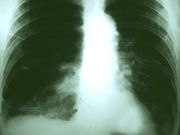Second cancer was fatal in 55 percent of the cases studied
FRIDAY, July 8, 2016 (HealthDay News) — A new study indicates that 8 percent of patients — or one in 12 — already diagnosed with one form of cancer will develop a second unrelated malignancy. The findings were published online July 5 in Cancer.
The study included more than 2 million people diagnosed with cancer. Patients in the study were initially diagnosed with cancers of the prostate, breast, lung, colon, rectum, bladder, uterus, or kidney or melanoma or non-Hodgkin lymphoma. Of those who developed a second cancer, only 13 percent died of their initial cancer, while 55 percent died of their second primary malignancy.
The team found that patients diagnosed with bladder cancer were the most at risk for developing a second malignancy. Thirty-four percent of bladder cancer patients were diagnosed with a second cancer during the 20-year study. Of those second cancers, 25 percent were lung cancer cases. People initially diagnosed with non-Hodgkin lymphoma also faced a particularly high risk for a second cancer. The most common second cancers for these patients were lung, prostate, or breast cancers.
“Lung cancer is a very common and extremely lethal disease, and the national screening trial found [in 2011] CT scans actually saved lives,” study author Karim Chamie, M.D., of the David Geffen School of Medicine at University of California, Los Angeles, said in a news release. “We could make a significant improvement in cancer survivorship, for instance, if we monitored bladder cancer patients annually for second, unrelated lung cancers,” he added.
Copyright © 2016 HealthDay. All rights reserved.








